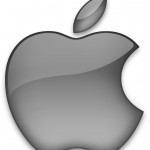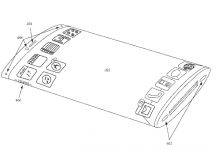That infamous Apple reality distortion field that brought us such technological breakthroughs as the extra few nths of an inch on the iPad Mini screen is obviously cranked up to the max again. Apple has just filed a patent application (United States Patent Application 20130254284) with the US Patent and Trademarks Office for “Embedding an autograph in an electronic book.” And many tech journalists are reporting this as cutting-edge Apple innovation – despite the fact that other solutions for digitally autographing ebooks have been around in the market for years. I mean, it’s an area that is so well-established that there are even two preset TeleRead tags for it, for God’s sake.
As I already reported in a previous TeleRead piece, there are several competing options already out there for digital signings. Evan Jacobs’s Authorgraph service [http://www.authorgraph.com/] has been around since May 2011, according to its creator. MyWrite [http://www.mywriteapp.com/home], another solution, even offers an Apple App Store app for the purpose, leading you to wonder whether Apple even bothered to check its own App Store before making the filing.
If there is any unique intellectual property in the Apple filing, it could relate to the author-focused and proximity-based nature of the autographing process, which, as per the wording of the filing, focuses on “determining, by an author’s device, that a reader’s device is within a coverage area capable of communicating with the author’s device; the author’s device being associated with a first user account controlled by an author,” and so on. However, most of the journalists covering the story didn’t appear to dig that deep, and simply reported the patent as an Apple breakthrough.
AppleInsider journalist Mikey Campbell, for instance, blithely reported this as “a peculiar Apple invention” and simply covers the whole concept of digitally signing ebook copies, innocent of any apparent awareness that someone else has already done it. “Apple’s autograph embedding patent application was first filed for in 2012 and credits Casey Maureen Dougherty and Melissa Breglio Hajj as its inventors,” he concludes, but obviously the Authorgraph platform for one considerably predates this. And at least one sharper-eyed reader in the AppleInsider comments column remarks, citing Authorgraph, “there’s already at least one app for that.”
If Apple wants to really win back its innovation crown, I reckon it should patent that reality distortion field. I mean, a method of influencing journalists’ minds across vast distances and paralyzing their critical faculties, not to mention their Googling fingers? And of erasing the term “prior art” from their vocabularies? And of trapping their attention-spans within Apple’s walled garden? Sounds like breakthrough tech to me.

































The reality distortion field (RDF) used to be attributed to Steve Jobs alone. Perhaps the surviving Apple executives have found a way to take up and exercise this ability but the evidence doesn’t seem to support that. If anything, journalists have been largely panning Apple at every opportunity. Then, Apple sold 9 million iPhones in 3 days and they’ve quieted down for the moment. So, the RDF doesn’t seem to be working well lately, if ever it did.
On patent applications, we are unfortunately living in an era where law has fallen so far behind events that businesses have to engage in a bizarre contest of patenting even the most obvious things.
I hear that New Zealand has injected an uncommon level of common sense into their patent laws. Would love to hear more about that and how it is working for them.
By “journalist” of course you mean “ifanboy bloggers.”
I’ve often thought the idea of autographing digital books was silly, since the writing is not real and isn’t done with a pen as the reader stands in front of the author. I could do the same, I’ve thought, by putting a graphic with my signature on the title page.
But it just came to me that something a bit less silly might be possible. Imagine an author getting up in the morning and there’s an email from the iBookstore notifying him that he has several authors signings pending.
He logs in with an iPad app. Each signing comes a note from the purchaser describing what they’d like it to say. He takes a touch-pen to the screen of his iPad and gives each a personalized note. Apple then handles the details of inserting that into the ebook.
I doubt such signings will every become much-sought-after collectables like a first-edition Hobbit signed by Tolkien. But they do establish a personal link between the author and reader.